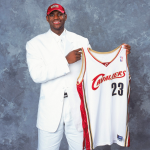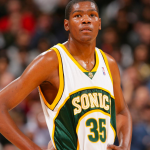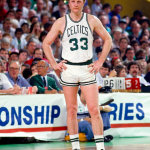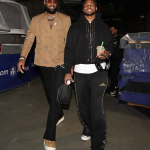
Why in the NBA white jerseys have disappeared
This is not a coincidence, but a symptom of a trend that could change the aesthetics of the sport
January 24th, 2024
The NBA has emerged as the most modern and effective sports league by constantly updating its aesthetic profile and introducing numerous innovations that have since been adopted by other sports. This rapid evolution has also affected the traditions of the star-studded basketball league, which has taken on some of its unwritten rules several times. One of these changes concerned the white jerseys, which used to be synonymous with the team playing on the home court and are now rarely seen in arenas. Paradoxically, they are now seen even more often at away games than at home games, causing a reversal that can only be described as a coincidence at first glance. The decline of the home jersey is a perfect example of how the purpose of match jerseys is changing: from a garment necessary to distinguish teams and players on the pitch to a consumer object subject to creativity and sales initiatives.
Since the 2017-18 season, when Nike became the league's official supplier, a system of four jerseys has been introduced: the Association, a white jersey; the Icon, a dark jersey; the Statement, an alternative jersey; and the City Edition, which changes every year and has no fixed colour scheme. Some teams also have a Classic jersey, which echoes the look of some of the franchise's historic jerseys. There are also set minimum requirements for teams to use the different jerseys: Association and Icon must be worn at least 10 times during the season, Statement six times, City Edition and Classic three times. A puzzle that must be combined over the NBA season 1,230 games in order to avoid awkward colour kit clashes and use the best-selling jerseys in the most important games of the season. It is precisely this last reason that has led to white jerseys being used for away games when the team's fans, i.e. the main buyers, are not present in the arena.
According to NBA journalist Mike Vorkunov on The Athletic, the use of association jerseys this season was similar to the 2017-18 season, Nike's first year as a technical sponsor, but what changed was the split between home and away games. In the first season under Nike, teams wore the Association kit around 29 times per season, averaging 17 home games. This season, the Association jersey was worn an average of 29 times per team, but only nine times for home games. This reversal meant that 22% of the season's games were played by two teams both wearing coloured kits, effectively defeating the original purpose of a white home kit common to all franchises. At the best of times, around the holidays or during the most exciting games, marketing departments go to great lengths to get their players on the pitch in something other than the boring white jerseys. In fact, it's no news that interest has increasingly shifted to City and Statement Edition, and in some cases the Classic ones, to promote greater recognition and aesthetic identity for each franchise. This is the case with the Miami Heat, for example, who have made a successful history with the design of their Miami Vice jerseys - in the City Edition collection - and through the White Heat initiative.
Returning to the NBA's pioneering role in sporting and aesthetic dynamics, Vorkunov points out that the other US professional leagues, from the NFL to the NHL, are also adapting to this trend. This could soon be the case in European football too, where teams are investing in third and fourth kits to increase the offer for their paying public during the season. Of course, the regulations of football federations are much stricter than those of the US leagues, but perhaps we are indeed approaching a time when the home kit of football teams on the pitches gives way to other kits with ever-changing colours and designs. I wonder how traditional football fans will feel when one of the sport's oldest traditions is abandoned.
























